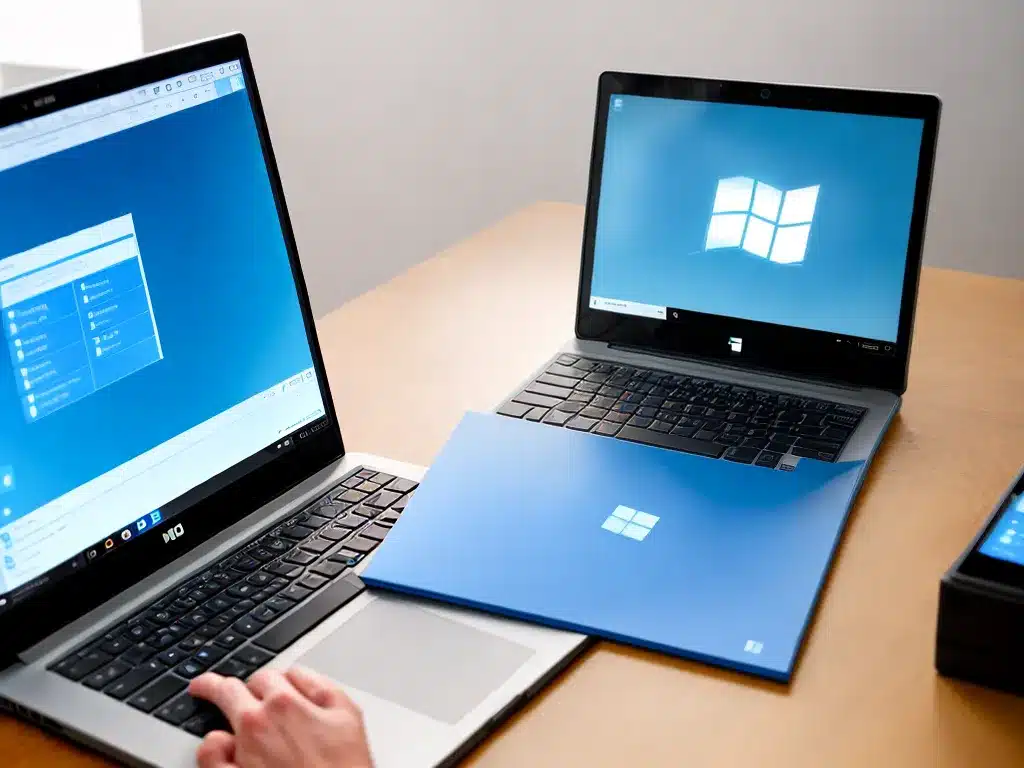
Protecting your data with encryption is important for security and privacy. Windows 10 makes it easy to create encrypted backups to safeguard your files. In this guide, I’ll walk through the steps to enable this important feature.
What is an encrypted backup?
An encrypted backup is a copy of your files and folders that is scrambled and secured with encryption. This prevents unauthorized access to the backup.
To access an encrypted backup, you need a special key or password to unscramble the contents. Encryption transforms plaintext data into ciphertext that looks like gibberish without the decryption key.
Benefits of encrypted backups:
- Privacy – Encryption keeps your personal and sensitive data protected.
- Security – Encryption prevents criminals and malicious actors from accessing your backups.
- Compliance – Encryption helps meet data security regulations for sectors like healthcare and finance.
How to enable encrypted backups on Windows 10
Windows 10 includes a built-in backup utility called File History. Here are the steps to configure encrypted File History backups:
Step 1: Connect an external drive
First, you need an external hard drive or USB drive to store the encrypted backups. Connect the drive to your computer.
Step 2: Turn on File History
Open the Start menu and search for “File History Settings”. Click on it.
In the File History window, click the “Turn on” button.

Step 3: Select the backup drive
You should see the connected external drive listed under “Back up to a different drive”. Click on it and then click “Select Drive”.
This selects the external drive as the location for storing backups.
Step 4: Enable encryption
Under “Back up using File History”, click the “More options” link.
Check the box for “Back up my files with encrypted backups” and click OK.

This enables encryption for the backups.
Step 5: Run the first backup
In the File History window, click “Back up now” to run the first encrypted backup.
The initial full backup may take a while depending on the amount of data. Subsequent backups will only copy changed or new files.
Choosing a strong password
When enabling encryption, Windows will ask you to create a password to secure the backups.
Be sure to choose a strong password for maximum protection:
- Length – Use at least 8 characters, longer is better.
- Complexity – Mix of uppercase, lowercase, numbers and symbols.
- No words – Avoid using dictionary words which are easy to guess.
- Passphrase – Consider using a memorable passphrase instead of a single password.
Store the password in a secure password manager like KeePass. Without the password, you cannot restore from encrypted backups.
Restoring files from an encrypted backup
To access files from an encrypted File History backup:
-
Open the File History interface from the Start menu.
-
Click “Restore personal files” and select the desired backup point in time.
-
Navigate the folder structure and select the files to restore.
-
Click the green “Restore” button to retrieve the files.
-
Enter the backup encryption password when prompted.
With the proper password, you can easily restore files from encrypted File History backups.
Best practices
Here are some additional tips for maintaining effective encrypted backups:
- Test restores – Periodically do sample file restores to verify backups.
- Store keys safely – Keep backup passwords/keys in a secure place like a password manager.
- Automate backups – Set a schedule for automatic incremental backups.
- Rotate drives – Use multiple drives and rotate offsite for protection from physical loss.
- Verify encryption – Double check that backups are actually encrypted by trying to access files without the password.
Conclusion
Encrypting your backups is critical to protect important and private data. Windows 10 makes the process straightforward with File History encryption. With a few simple steps, you can safeguard your personal files from unauthorized access. Be sure to use a strong master password and follow other best practices to get the most from encrypted Windows backups.












